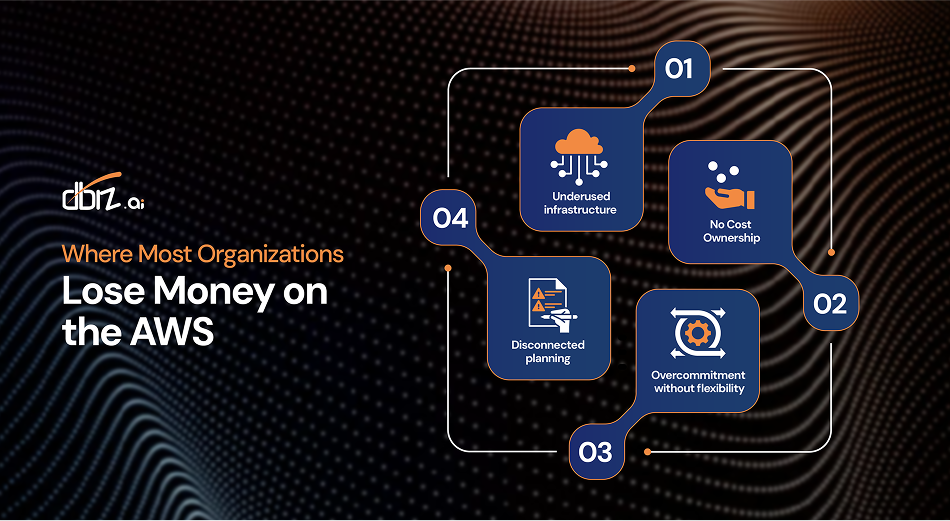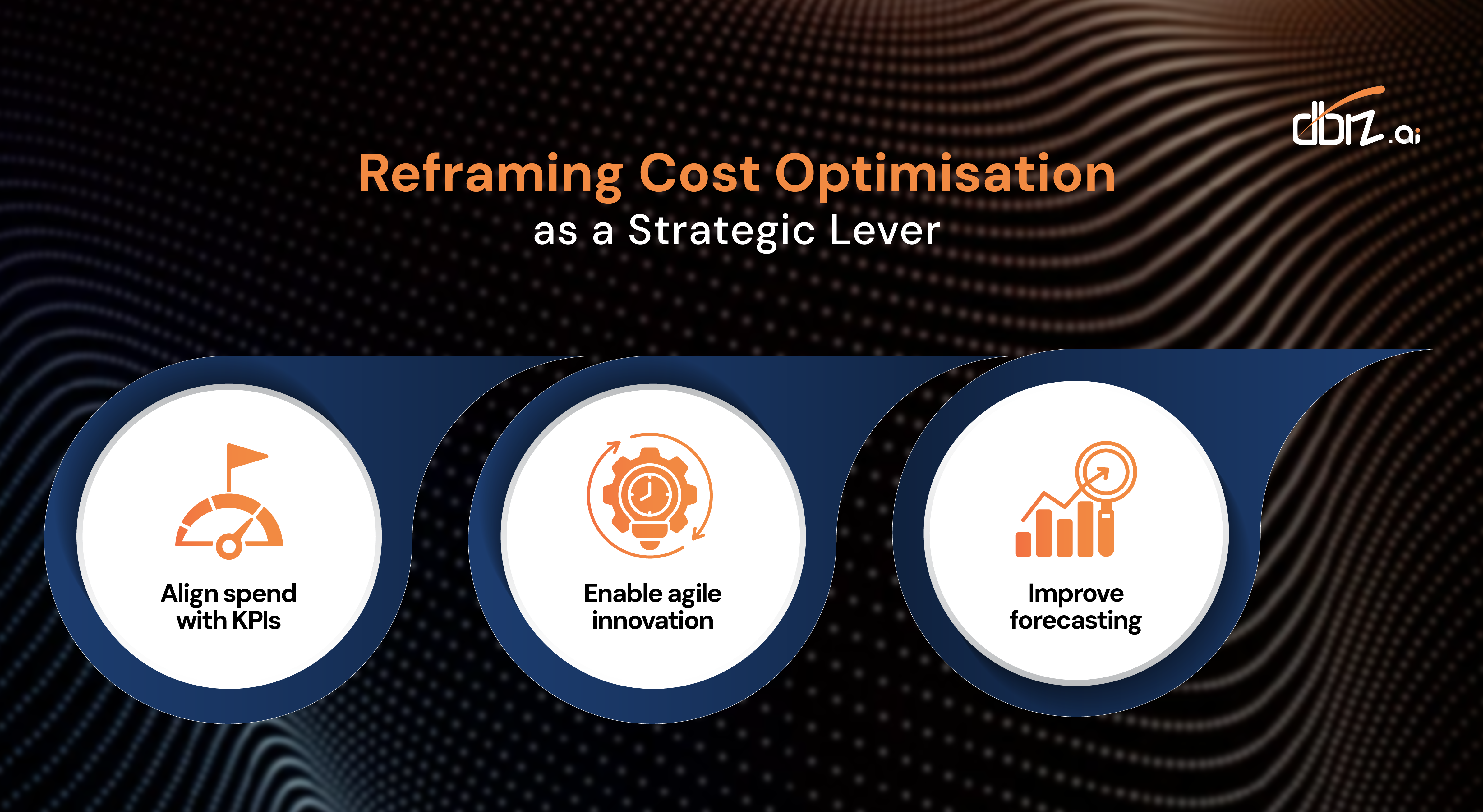Table of Contents
Introduction
AWS gives teams the freedom to build fast, scale globally, and stay flexible. But without a clear view of how cloud choices connect to business goals, it’s easy for cloud costs to drift. Instances multiply. Budgets stretch. And decisions start happening without context.
At DBiz, we bring structure and strategy to that process. Instead of chasing costs reactively, we help teams turn cloud spend into a deliberate investment. We monitor usage, rightsize resources, and align infrastructure choices with what actually moves the business forward.
What Are AI-Driven Customer & Partner Portals?

Even mature AWS environments often face these common issues:
- Underused infrastructure: Idle test instances, oversized compute, or underutilized databases.
- No Cost Ownership: When dev and ops teams scale infrastructure resources without budget visibility.
- Overcommitment without flexibility: Reserved Instances locked in for three years despite evolving needs.
- Disconnected planning: Finance, engineering, and leadership operating on different assumptions about what’s worth spending on.
According to industry data, 30–35% of cloud spend is typically wasted, much of it on idle or misprovisioned resources. And while that number may seem high, it also points to the opportunity: cost optimisation is often the fastest way to improve cloud ROI.
Reframing Cost Optimisation as a Strategic Lever

Organisations that treat cost optimization as a technical clean-up task miss the bigger picture. Real value comes when optimization is tied to business strategy.
- Align spend with KPIs: Tracking spend by business unit, feature, or product makes it easier to justify investment, or cost reallocation.
- Enable agile innovation: Reduced infrastructure waste frees up budget for testing new features or scaling faster.
- Improve forecasting: Use AWS budgeting and alerts to build predictable, transparent cost models. Use AWS budgeting and alerts to build predictable, transparent cost models.
Think of it as not reducing spend, but rather as reallocation to areas that deliver the most impact. Spend smarter on what moves the business forward.
What Strategic Optimization Looks Like in Practice
- Here are real-world examples of how aligning cloud spend with business goals drives ROI:
• Lyft reduced cost-per-ride by nearly 40% in six months after surfacing AWS cost data across product and engineering leadership.
• GE Vernova saved over $1M in less than a year through rightsizing EC2/RDS workloads, switching to Graviton-based instances, and automating shutdown schedules.
• A global SaaS firm Switched from Reserve Instances to Compute Savings plans, gaining flexibility while reducing EC2 costs by 26% - At DBiz, our cloud architects have implemented similar strategies for clients transitioning from static provisioning models to more dynamic, KPI-aligned frameworks.
Frequently Asked Questions
- How do we know which services are overspending?
Start with AWS Cost Explorer and CUR to find anomalies. Then, use Compute Optimizer for tailored recommendations. - How often should cost reviews be done?
At least monthly. Weekly cadence is better for environments with high activity or experimentation. - What’s better: RIs, Savings Plans, or Spot?
It depends. RIs offer highest discounts but lowest flexibility. Savings Plans strike a balance. Spot is ideal for non-critical or fault-tolerant workloads. - How can we show leadership the ROI?
By linking spend data to operational metrics (like cost per user, per feature, per transaction) and then projecting opportunity cost of inefficient spend.
The DBiz Approach to AWS ROI
Cloud optimisation is a continuous feedback loop. At DBiz, we help clients:
- Identify and reallocate wasted spend
- Build cost-aware engineering cultures
- Set up FinOps dashboards and governance
- Improve forecasting, governance, and decision-making
Explore our AWS Services to learn how we can support your cost optimisation journey from discovery to implementation and ongoing governance.
Looking Ahead
Cloud costs are only going up. The real differentiator is alignment. When infrastructure spend is directly tied to business outcomes, ROI is built into the architecture, and that drives the growth.
That’s where DBiz can help you make that shift.


